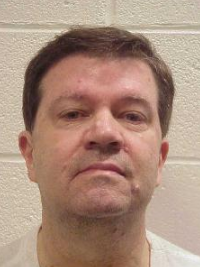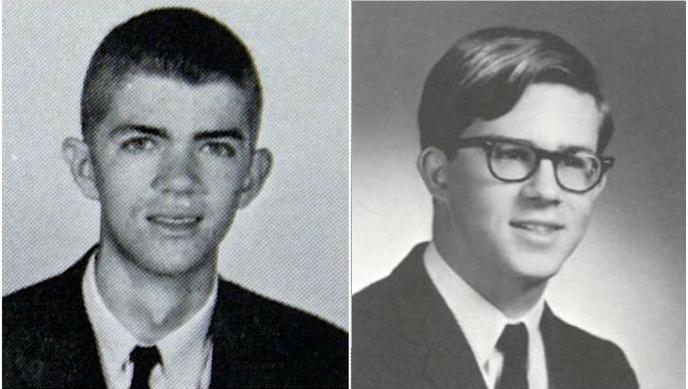
b: 1950
Richard Westall Rogers Jr.
Summary
Name:
Richard Westall Rogers Jr.Nickname:
The Last Call KillerYears Active:
1973 - 1993Birth:
June 16, 1950Status:
ImprisonedClass:
Serial KillerVictims:
2+Method:
Bludgeoning / Stabbing / DismembermentNationality:
USA
b: 1950
Richard Westall Rogers Jr.
Summary: Serial Killer
Name:
Richard Westall Rogers Jr.Nickname:
The Last Call KillerStatus:
ImprisonedVictims:
2+Method:
Bludgeoning / Stabbing / DismembermentNationality:
USABirth:
June 16, 1950Years Active:
1973 - 1993bio
Richard Westall Rogers Jr. was born on June 16, 1950, in Plymouth, Massachusetts. He was the oldest among five children. His father worked as a lobsterman, while his mother was employed as a telephone worker. In the late 1950s, the family moved to Florida for his father's new job in sheet metal manufacturing. There, Rogers learned traditional skills like hunting and fishing from his father.
Growing up, Rogers was described as skinny and timid. He faced bullying during his time at Palmetto High School, partly due to his high-pitched voice and effeminate personality. Unlike his father, Rogers did not engage in sports. Instead, he often accompanied his mother to Girl Scout meetings. Despite these challenges, he excelled academically, earning straight A's and being part of the French club.
In the late 1960s, a troubling incident occurred when Rogers allegedly stabbed an older woman who lived next door. This act led to his brief institutionalization. After this time, he graduated from Palmetto High School in 1968.
After high school, Richard Rogers attended Florida Southern College in Lakeland, Florida. He was seen as a quiet loner, keeping mainly to himself, although he had a close friendship with his second roommate. While not active in many college clubs, he joined Circle K, a service organization. Rogers graduated in 1972 with a Bachelor of Arts degree in French.
murder story
On April 28, 1973, Richard Rogers killed Frederic Spencer in their shared home in Orono, Maine. Rogers struck Spencer eight times in the back of the head with a roofing hammer. After this, when Spencer was still alive, Rogers put a plastic bag over his head to asphyxiate him until he died. Later that evening, Rogers wrapped Spencer's body in a nylon tent and dragged it to his car. He then drove to Bird Stream forest and dumped the body.

Frederic Spencer's body was discovered on May 1, 1973, by two cyclists. The police identified him through a key found in his pants. Investigators searched the house he shared with Rogers and found bloody fingerprints, a bloody footprint, and the hammer used in the attack. Rogers was taken in for questioning and admitted to killing Spencer, claiming it was self-defense.
Rogers was charged with murder but pleaded not guilty. He remained in jail for six months before his trial began on October 29, 1973. During the trial, various witnesses, including a medical examiner, testified. Rogers also took the stand, asserting that he acted in self-defense when Spencer attacked him with the hammer. The jury deliberated for under three hours before finding Rogers not guilty of murder.
Following his acquittal, Rogers moved to New York and pursued a nursing career. However, his troubles were not over. In 1988, he was accused of assaulting a man he had invited to his apartment. The man claimed he fell unconscious after drinking orange juice that Rogers had given him and later woke up tied to the bed. Rogers was arrested but was acquitted in a nonjury trial that December.
Between 1991 and 1993, several murders of gay and bisexual men took place after they were lured from bars in Manhattan. Richard Rogers was involved in these cases, eventually being linked to the murders of Thomas Mulcahy and Anthony Marrero. The bodies of the victims were found dismembered and discarded in bags along highways.
Rogers was a suspect in the murder of Peter Anderson, whose remains were found in Pennsylvania, and in the murders of other men across various states. After years of investigation, new forensic techniques led to the recovery of fingerprints from crime scenes. In 2001, police linked those fingerprints to Richard Rogers.
On May 28, 2001, police approached Rogers under the pretense of credit card fraud. Once in the interrogation room, he learned he was under investigation for murder. Rogers admitted to knowing one of the victims but requested a lawyer and was arrested. During the search of his home, investigators found evidence that connected him to the murders.
Rogers' trial began on October 26, 2005. He faced charges related to the murders of Mulcahy and Marrero. Witnesses and detectives testified against him, but Rogers chose not to testify in his defense. In November 2005, the jury found him guilty on all counts. He received two consecutive life sentences and is currently imprisoned in New Jersey State Prison.